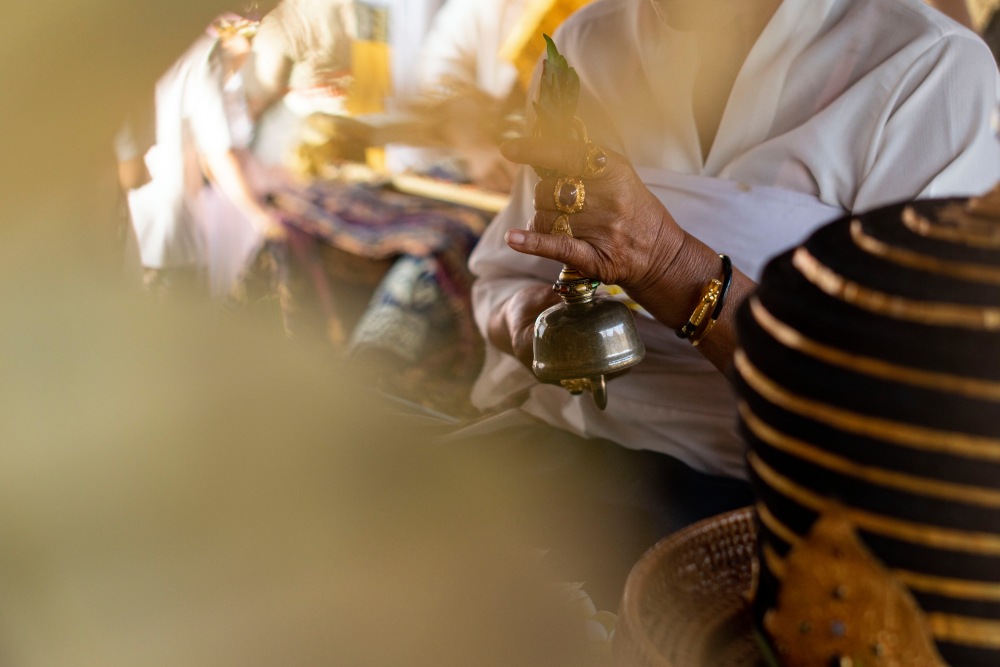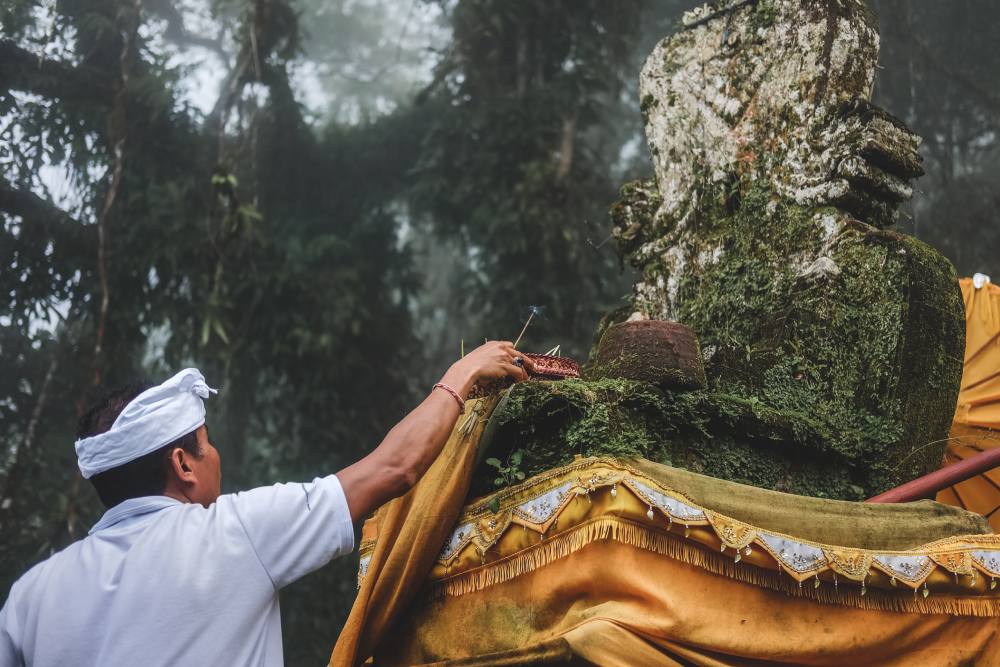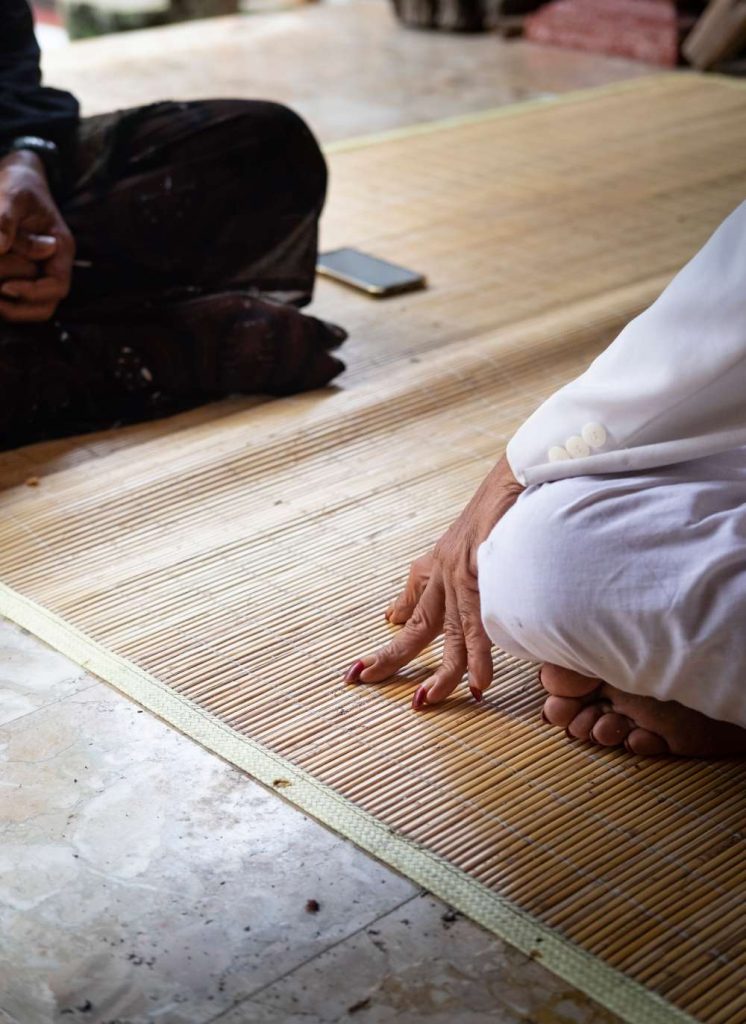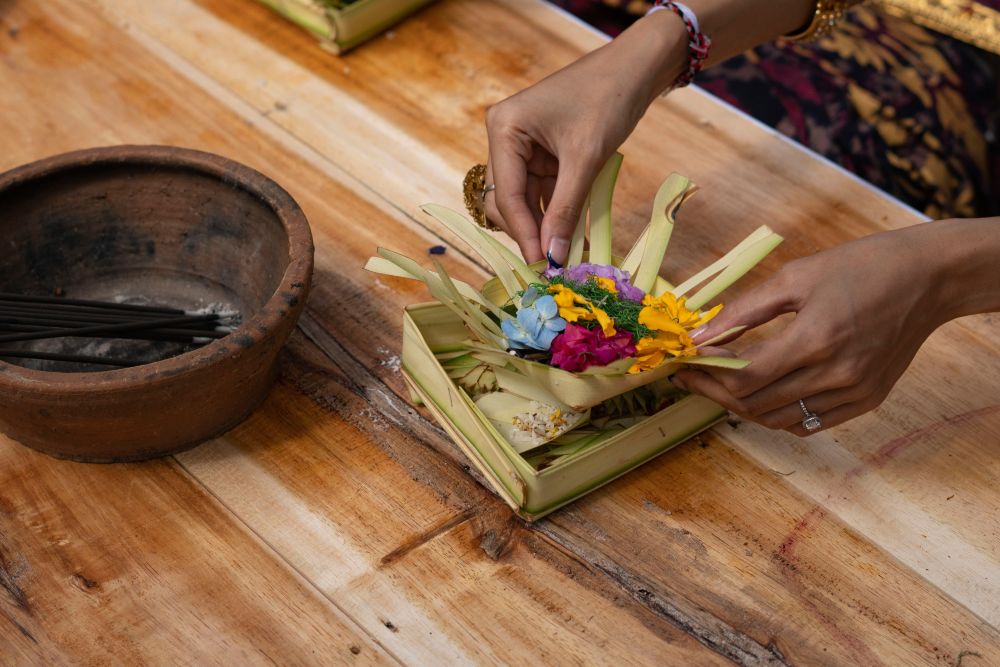
‘Ngiring: Accompanied by the Gods’, is Part One of a two-part article on trance in Bali by Jean Couteau. Make sure to read NOW! Bali’s September-October 2023 edition for Part Two.
Balinese religion is a complicated thing. You have what the school books and the Parisada Hindu organisation teach you: The unity of the godly in Sang Hyang Widhi Wasa, the One Almighty, to whom all prayers are ultimately addressed, to whom are added the cosmic gods of the Hindu Pantheon. Linked to this you have the thousand-year-old written ritual traditions, practised in and around the Gria and Puri compounds of the priests and royalty respectively. Their fantastic ceremonial paraphernalia, and high priests uttering mantras and providing holy waters for the ordinary folk.
Then, you have Wayan T., a well-known Balinese intellectual. He sits at my house and tells me in the privacy of my house that there is then the “original” Balinese religion, practised by all those who never go to the high priests for the holy waters. They go instead to holy water spots themselves and direct their life following the advice, not from the Brahmins, but instead the balians — the shamans and trance mediums.
“This is the deepest, and most indigenous side of Balinese ‘religion’, Pak Jean,” he tells me. “All the other layers are historical additions,” he adds. Instead of addressing prayers to a cosmic God, like Sang Hyang Widhi Wasa, who to some may feel too abstract and distant, or indeed to a pantheon of Hindu deities; and instead of referring according to the rules and rites of high priests; there are those who prefer to address the gods directly. These gods, who are mostly ancestral souls, are asked to come down and manifest themselves through the balian and indeed other mediums, through whom instruction, advice, direction are given. This practice, at least in Western definition, would qualify as a type of ‘trance’ or ‘possession’.
Let’s take a closer look at this phenomenon… There are all sorts of possessions in Bali. The most common of which is ngiring, meaning exercising the ability to be ‘accompanied’ by a god. The ability to “ngiring Ida Batara” (be accompanied by a god) is often obtained following an illness or other crisis, followed by a loss of consciousness, and a visit to some holy temple where this chosen person is then visited by a given god. This god is never an Indian-named god, but always a god with a typical Balinese name, such as Batara Selat Tukad, “the gods from the opposite side of the river”.

That person will then set up a shrine in his or her house from which they will call the god down on request to give advice to visitors. The medium then usually functions as a balian, or a shaman. The balian is, as Wayan T said above, the principal priest of the old Balinese ways. It is the balian that guides the Balinese through life. This has little to do with Hinduism. Hinduism may provide a theoretical and theological framework, but it is the veneration and deification of local ancestors and the local worship of natural elements as gods which governs much of Balinese life.
How the Balians Guide the Balinese Through Life
Life is a passage. One is born when an ancestral soul comes down. It then goes through life trying to keep balance. This is the purpose of calendar rites, and of offerings and ceremonies. After death, the same soul goes back home. Where to? To ‘tanah ane wayah’, the old country, a world above the high mountains. Here, the soul takes the form of ‘yeh’ (water), whilst they await to be reincarnated in ‘gumi Bali’, or the world of Bali.
For life to run smoothly, parents must inquire which soul it is that has incarnated their baby. Because, unlike formal Hinduism, one always incarnates among the members of one’s own family here in Bali. This identification is not too difficult, as there are numerous balians and mediums who are able to become ‘possessed’ (kerauhan) by godly forces at will.
12 days after the birth of a child, all parents in Bali go to a balian, who shall tell the parents the significance of this birth. The parents usually will bring a small pejati offering. Once they have been introduced, the balian burns some pasepan, a ceremonial wood incense, which he or she will inhale deeply whilst calling out a series of gods’ names (normally mountains): God of Gunung Agung, God of Lempuyang, God of the ‘Opposite Valley’, and so on. At some point, the balian will submit to an ‘incarnating soul’ who has come down from above, taking control of the balian – ngiring, in the act. The soul will ask the parents that the purpose of their visit is: “What can I do for you, my dew?” the ancestral soul will ask (‘dew’ refers to the form that souls take upon death).
The same voice will utter in a jumble of words — the signs that will enable an identification of the soul that has entered the child. Perhaps a famous grandfather, perhaps a forgotten great aunt.
Once satisfied in their quest, the parents take leave. They will then help the newborn to carry on with his/her life, including the related rites. All are clearly defined by habit and calendar duties.


The important point is that once the ancestor is identified, it is on its way to life – and ultimately to death. Now a person, he or she has to maintain the right balance between the positive and negative forces of the niskala, the unseen forces. For that purpose, he or she has to follow strictly defined calendar rites, most importantly those addressed to ancestors and local gods – never to Hindu gods. This is done using holy “water” from the water spots traditionally used locally for generations.
Alas, it does not always work. There are illnesses, accidents, and psychological distress. These are signs of imbalance. Then, what does one do? A visit to a balian is required once again, to ngiring and seek answers from the niskala. This summoned ancestor – again, speaking through the balian – will have a complaint of their own, accompanied by tears and shrieks: “Why have you and your kin neglected me after I have passed away!” says a disgruntled uncle who disappeared decades ago, and was thus never given the proper death and burial rites. He has been stuck in purgatory, his ‘lost soul’ unable to return to the top of the mountain to find peace and await reincarnation. He has been the cause of the misfortunes and incidents; best to appease him lest new woes follow!
It goes on like this through all life, with ceremonies to keep the balance, and balian trance sessions whenever advice is needed or something feels ‘off’. The last consultation is after death. Then, it is the newly dead person who is consulted. His/her soul will come down using the same procedure, even though the request will be different: “Children, don’t forget to give me a proper batik cloth, with a big jug of water, I will need on my way back home.”
This is how the soul travels: it comes down, lives a life of rites, and then returns back to the old country. Samsara, the cycle of reincarnation, continues.









